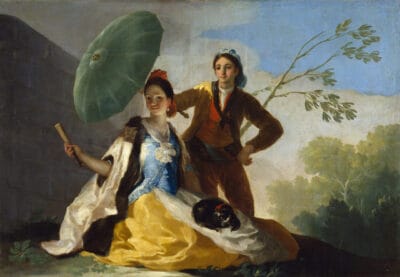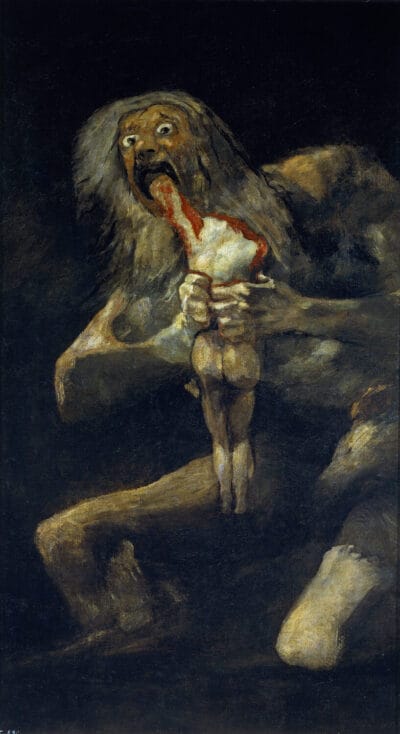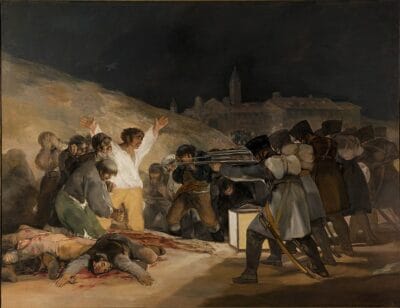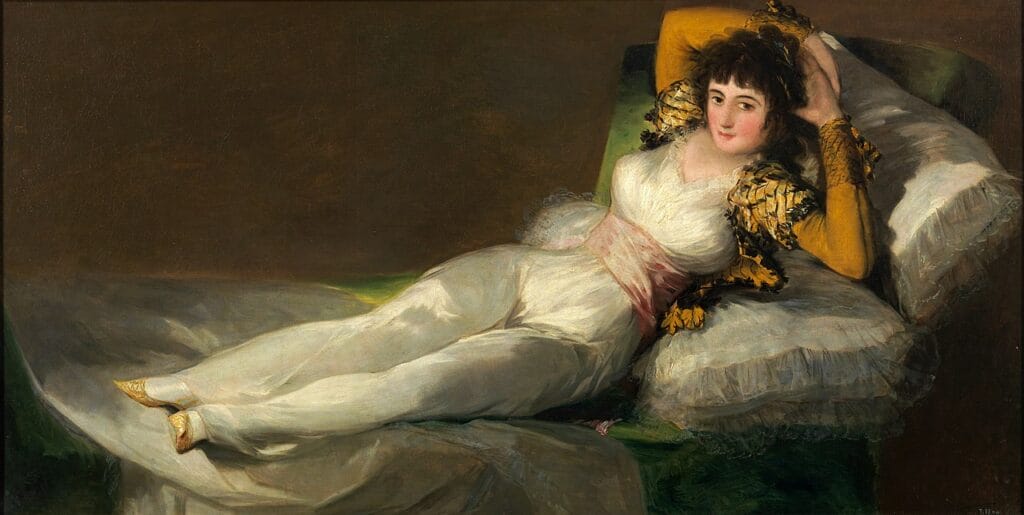Spain is renowned for its rich culture, history, and art. The country has produced some of the most influential and groundbreaking artists in the world, and Francisco de Goya y Lucientes is one such artist. His contributions to Spanish art are unparalleled, and his masterpieces continue to inspire and influence art enthusiasts and artists alike. This article takes you on a journey through Spanish art, exploring the life and works of Francisco de Goya y Lucientes, other prominent Spanish artists, and must-visit Spanish art museums.
Introduction to Francisco de Goya y Lucientes and Spanish Art
Francisco de Goya y Lucientes was a Spanish painter and printmaker who lived from 1746 to 1828. He is widely regarded as one of the most important artists in Spanish art history and a major influence on the development of modern art. Goya’s work is characterized by its realism, vividness, and emotional intensity. He was a master of various genres, including portraiture, genre painting, landscape, and still life.
Spanish art has a rich and diverse history that dates back to prehistoric times. The country’s unique position at the crossroads of Europe, Africa, and the Middle East has led to a rich blend of artistic traditions and cultural influences. Spanish art is characterized by its vibrant colors, bold compositions, and emotional intensity. From the prehistoric cave paintings of Altamira to the contemporary works of Spanish artists, Spain’s art scene is a treasure trove of creativity and inspiration.
The Life and Times of Francisco de Goya y Lucientes
Francisco de Goya y Lucientes was born in Aragon, Spain, in 1746. He trained under various artists in Zaragoza and Madrid and quickly gained recognition for his talent. He became the court painter to King Charles III in 1786 and the court painter to King Charles IV in 1799. However, his career was marked by personal tragedies, including the death of his wife and several children, and political turmoil, including the Napoleonic invasion of Spain.
Despite these challenges, Goya continued to produce some of his most groundbreaking works during this period. He created the Black Paintings, a series of dark and haunting works that he painted directly onto the walls of his house. He also created The Disasters of War, a series of prints that depicted the horrors of the Peninsular War between Spain and France. These works showcase Goya’s mastery of technique and his ability to convey complex emotions through his art.
The Early Works of Goya: Rococo to Neoclassicism

Goya began his career as a painter of Rococo-style portraits and religious works. His early works are characterized by their delicate brushwork, pastel colors, and ornate compositions. However, he soon became interested in the Neoclassical style, which emphasized classical themes and a more austere approach to painting. Goya’s Neoclassical works are characterized by their strong lines, dramatic compositions, and emphasis on realism.
One of Goya’s most famous early works is The Parasol, a painting that depicts a young woman with a parasol and a man standing beside her. The painting is notable for its use of light and shadow, which creates a sense of depth and dimensionality. Another famous early work is The Nude Maja, a painting of a reclining nude woman that caused controversy when it was first exhibited due to its erotic content.

The Black Paintings: A Dark Period in Goya’s Artistic Journey
The Black Paintings are a series of 14 paintings that Goya painted directly onto the walls of his house in the early 19th century. The paintings are characterized by their dark and haunting themes, which include death, madness, and despair. The Black Paintings are widely regarded as some of Goya’s most important works and a precursor to the modern art movement.
One of the most famous Black Paintings is Saturn Devouring His Son, a painting that depicts the mythological god Saturn eating one of his own children. The painting is notable for its intense emotional content and its use of chiaroscuro, which creates a dramatic sense of light and shadow. Another famous Black Painting is The Dog, a painting that depicts a dog staring out of a dark void. The painting is notable for its use of negative space, which creates a sense of unease and anxiety.
The Disasters of War: Goya’s Depiction of the Horrors of Conflict

The Disasters of War is a series of 82 prints that Goya created between 1810 and 1820. The prints depict the horrors of the Peninsular War between Spain and France and are widely regarded as some of Goya’s most important works. The prints are characterized by their graphic and disturbing content, which includes scenes of violence, torture, and death.
One of the most famous prints from The Disasters of War is The Third of May 1808, a print that depicts the execution of Spanish citizens by French soldiers. The print is notable for its emotional intensity and its use of light and shadow to create a sense of drama and tension. Another famous print is No se puede mirar (One Cannot Look), a print that depicts a man staring in horror at the aftermath of a battle.
The Portraits of Goya: The Rich and Famous of Spanish Society
Goya was also a master of portraiture, and his portraits are widely regarded as some of his most important works. His portraits are characterized by their realism, attention to detail, and emotional depth. Goya’s portraits captured the rich and famous of Spanish society, including members of the royal family, politicians, and aristocrats.
One of Goya’s most famous portraits is The Clothed Maja, a painting of a young woman dressed in traditional Spanish clothing. The painting is notable for its realism and its use of color to create a sense of depth and texture. Another famous portrait is The Duchess of Alba, a painting of a powerful and influential woman who was rumored to be Goya’s lover. The painting is notable for its emotional intensity and its use of light and shadow to create a sense of drama.

The Influence of Goya on Spanish Art and Culture
Goya’s influence on Spanish art and culture is immeasurable. His groundbreaking works paved the way for modern art movements such as Expressionism and Surrealism. His depictions of war and violence continue to inspire artists who seek to use their art as a means of social commentary. His portraits of Spanish society offer a glimpse into the cultural and social norms of the time.
Goya’s influence can be seen in the works of other prominent Spanish artists, including Pablo Picasso and Salvador Dali. Both artists were deeply influenced by Goya’s use of symbolism and his ability to convey complex emotions through his art. Goya’s legacy continues to inspire and influence artists and art enthusiasts around the world.
Other Prominent Spanish Artists and their Masterpieces
Spain has produced many other prominent artists, each with their own unique style and approach to art. One such artist is Diego Velázquez, a 17th-century painter who was a master of realism and portraiture. His most famous work is Las Meninas, a painting that depicts members of the Spanish royal family.
Another prominent Spanish artist is Joan Miró, a 20th-century painter who was a pioneer of the Surrealist movement. His works are characterized by their bold colors, abstract shapes, and playful compositions. One of his most famous works is The Farm, a painting that depicts a farm landscape in a surreal and dreamlike way.
The Must-Visit Spanish Art Museums
Spain is home to many world-renowned art museums, each offering a unique glimpse into the country’s rich artistic heritage. One such museum is the Prado Museum in Madrid, which houses a vast collection of Spanish and European art from the 12th to the 20th century. The museum’s collection includes works by Goya, Velázquez, and other prominent Spanish artists.
Another must-visit museum is the Picasso Museum in Barcelona, which houses a collection of works by the famous artist, including his famous Blue Period paintings. The museum also includes works by other artists who were influenced by Picasso, including Joan Miró and Salvador Dali.
The Legacy of Francisco de Goya y Lucientes in Spanish Art
Francisco de Goya y Lucientes was a master of Spanish art whose influence continues to be felt today. His groundbreaking works paved the way for modern art movements and his depictions of war and violence continue to inspire artists who seek to use their art as a means of social commentary. Goya’s legacy is evident in the works of other prominent Spanish artists and in the world-renowned art museums that showcase Spain’s rich artistic heritage. A journey through Spanish art is incomplete without a visit to the works of Francisco de Goya y Lucientes.
